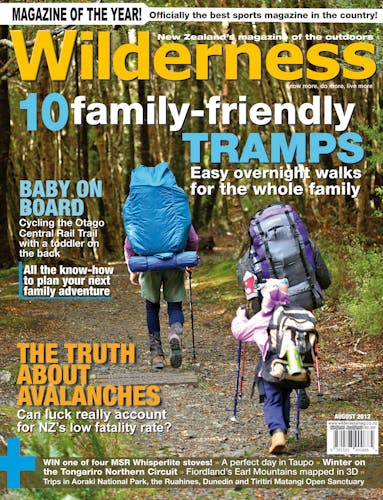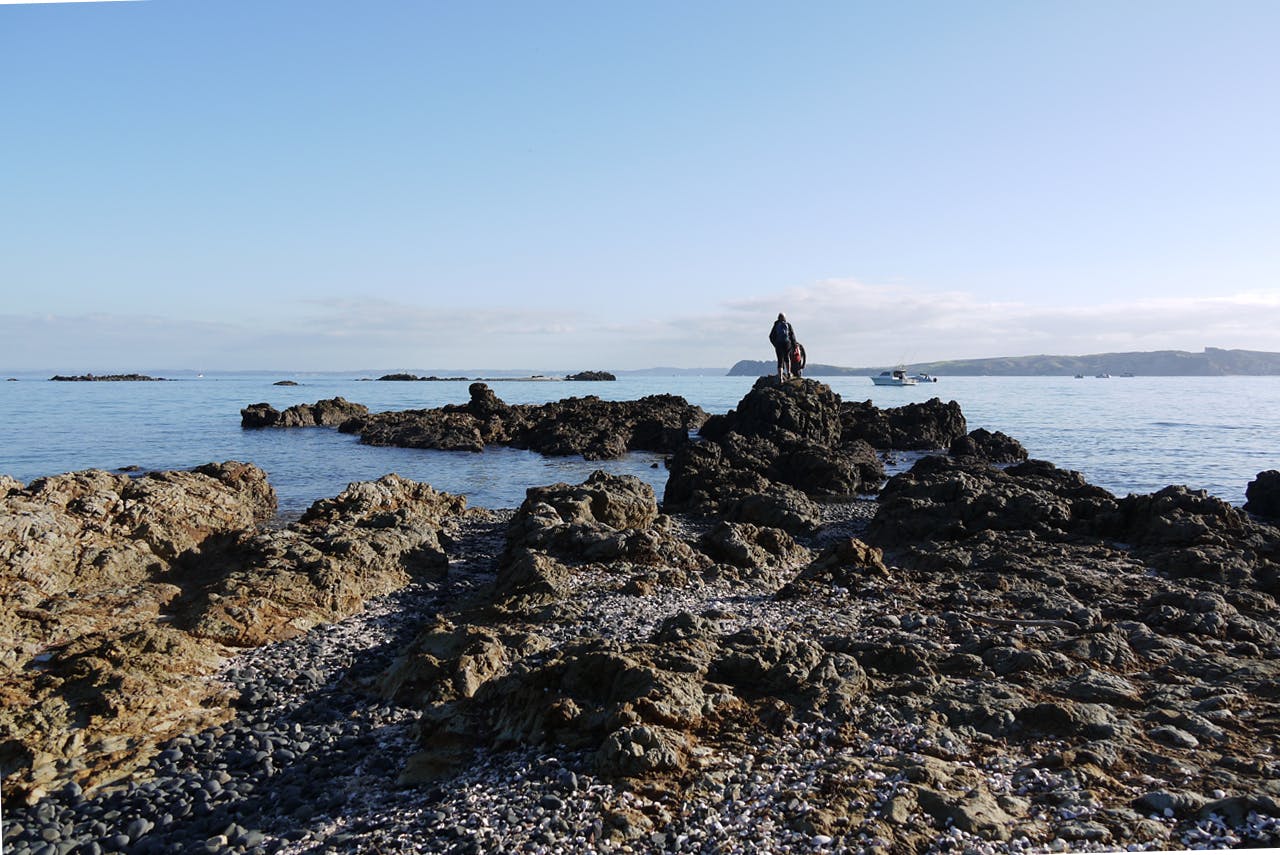- Time
- the ferry arrives on Tiri around 10.10am and departs around 3.30pm. You’ll need all that time in between to explore the island.
- Grade
- Easy
- Access
- By ferry (or private boat) from downtown Auckland or Whangaparoa Peninsula
- Map
- Download a free map from www.doc.govt.nz
- Links/Files
- Download the route notes, maps and GPX file
Tiritiri Matangi Open Sanctuary, Hauraki Gulf
Spending Queen’s Birthday weekend in Auckland proved the perfect opportunity hop on the ferry to explore Tiritiri Matangi Island in the Hauraki Gulf.
We drove to Whangaparoa to avoid the exorbitant downtown parking fees and joined at least 100 others for the ferry to Tiri. After paying $49 for each ticket, I was settling in for what I thought would be a 45-minute cruise. But little more than 15-minutes later we were disembarking onto the island.
You can freedom walk Tiri, but we had paid an extra $5 each to go with a guide. Compared to the price of the ferry, paying for the guides is value for money. The guides are volunteers so all the money goes into helping fund the island sanctuary, plus they have a wealth of knowledge to share on the native flora, fauna and history of the island.
We headed towards the lighthouse on the Wattle Track, a walk of nearly 4km. Along the way, our guide explained the history of the island – how it was once colonised by Maori, switching ownership several times through battle, and then Europeans who cleared the land and turned the island into a farm. There were lighthouse keepers here, too, starting in 1865 an ending in the mid-1980s when the light was automated. The last keeper, Ray Walter, stayed on to help manage the restoration project and was the DOC ranger on the island until 2006.
Replanting began in 1984 and by 1994 around 200,000 trees had been planted, restoring native forest to the island. Even so, just 60 per cent of the island is forested. The rest has been left grassed as some bird species, like pukeko and takahe prefer these areas.
With the trees back, rats and other pests removed, it was safe to release native birds onto the island.
All that hard work has paid huge dividends and the island is now an increasingly popular destination for those wanting to see native birds in their natural habitat. Walking the island’s tracks you never go more than a few seconds without hearing or seeing tui, North Island robin, bellbirds, stitchbirds and others.
During the early stages of the island’s reforestation, pohutukawa trees were planted and it is these that line much of the Wattle Track. Our group of six keeps a sharp eye out for any birds but it’s not until we reach the first of many hihi (stitchbird) feeding stations that we see any in abundance. Here, hihi dart in and out of the branches, giving chase to one another and singing loudly.
Further along the track, we find strategically placed seats opposite bird baths so walkers can sit back and watch the antics of tui, bellbird, North Island robin and saddleback splashing about as they clean themselves. Even without these structures to attract birds, it seems every second tree is host to one bird or another.
We leave the forest behind as we begin a gradual climb towards the lighthouse. At its base is a gift shop where I buy a tui-attracting bird feeder for our garden.
The ferry departs Tiri at 3.30pm, so for the next couple of hours we freedom walked the island’s tracks. We decided to combine the Ridge, Kawerau and Hobbs Beach tracks to reach the wharf.
Walking along the spine of the island on the Ridge Track, we were granted impressive views back to the lighthouse and beyond to the Coromandel Peninsula. To our left was Whangaparoa Peninsula. When we joined the Kawerau Track, we were back in the bush and immediately started spotting more birds, including whiteheads, which we hadn’t seen on the Wattle Track. Birdlife here seemed more prolific – perhaps because fewer people walk these tracks, preferring instead to walk the more direct tracks to and from the lighthouse.
We joined the Hobbs Beach Track and dropped down to the coast for the final stretch back to the wharf, past visiting boaties enjoying a spectacular Auckland day on the water.
– Alistair Hall








